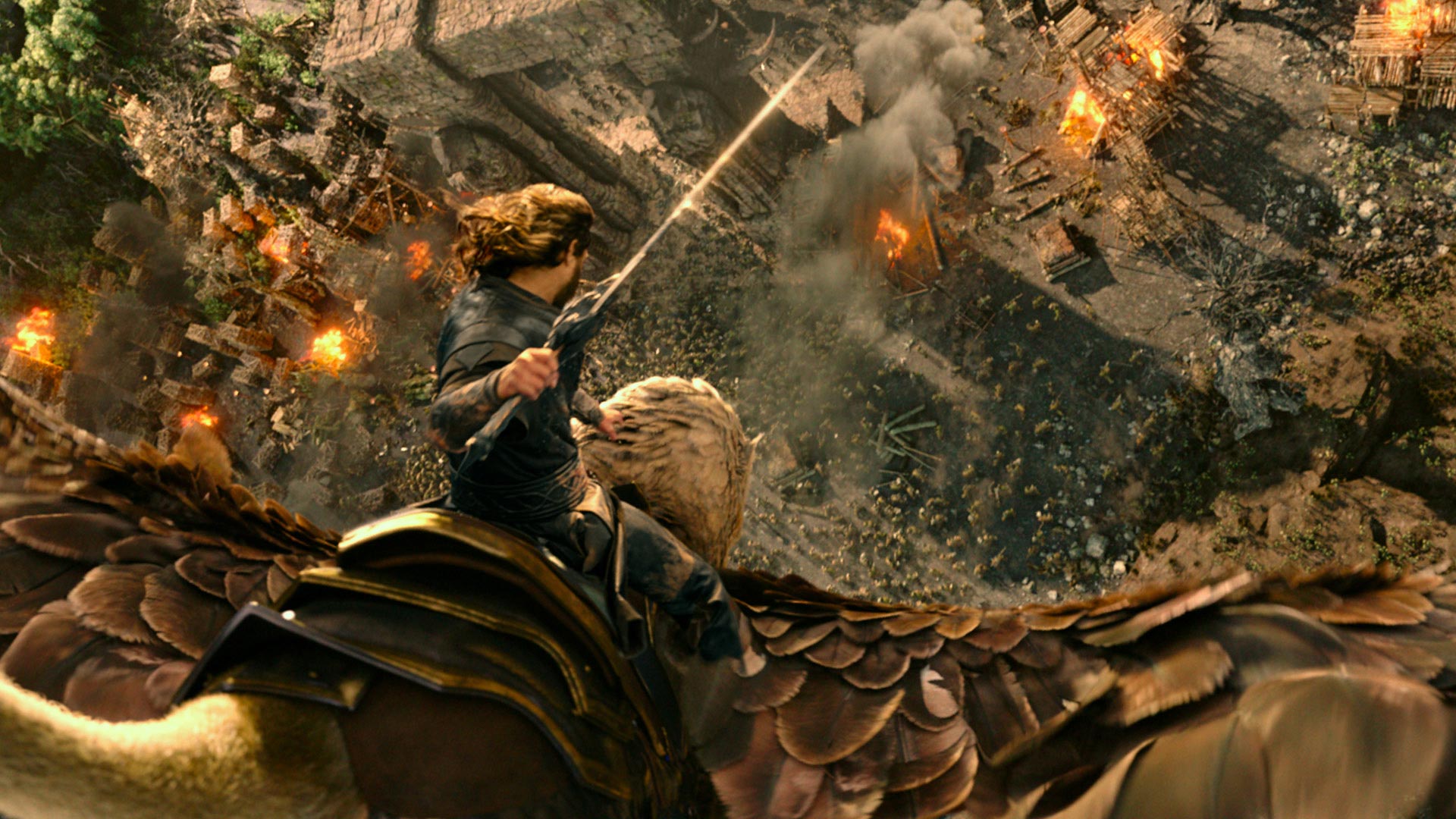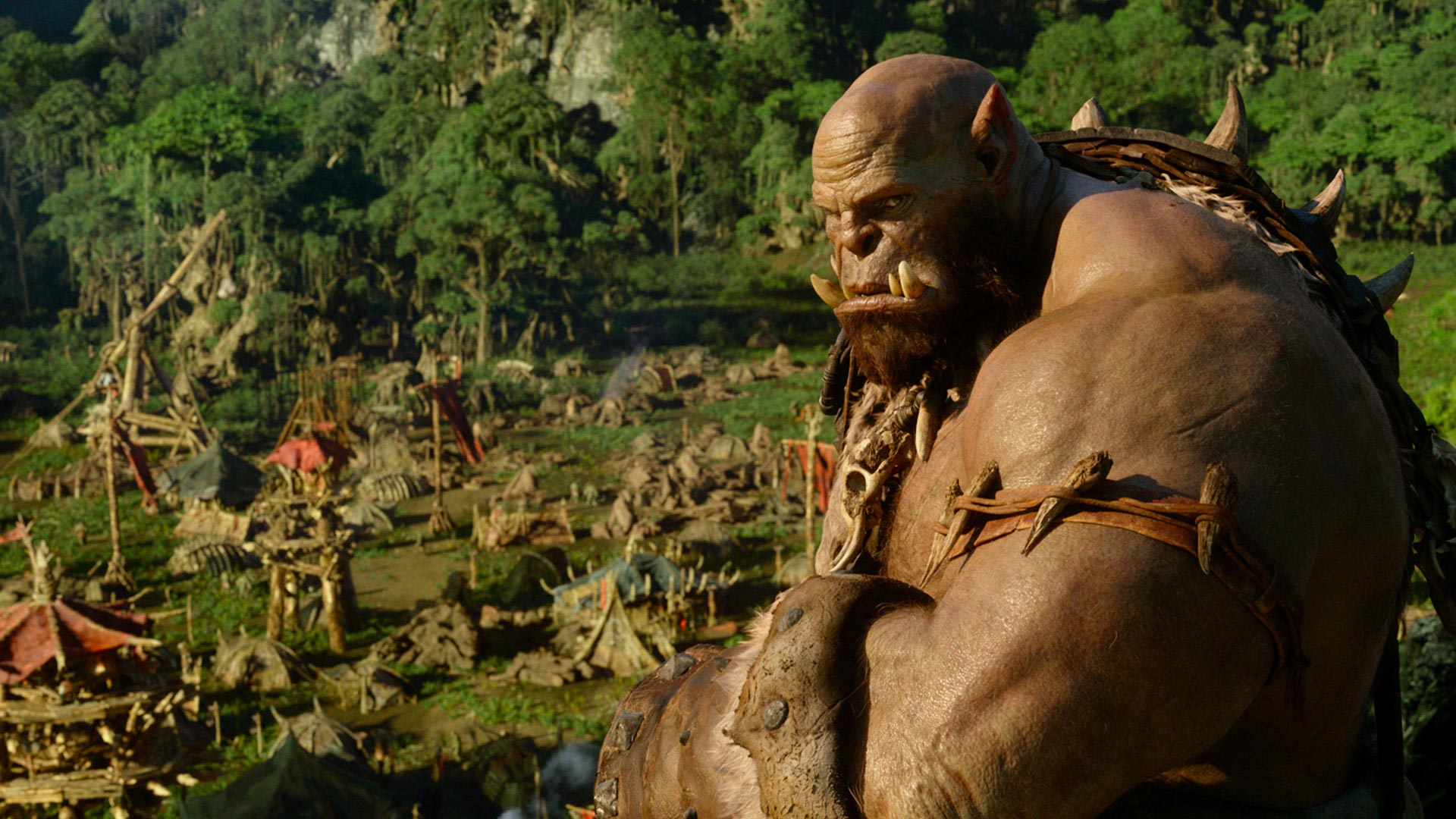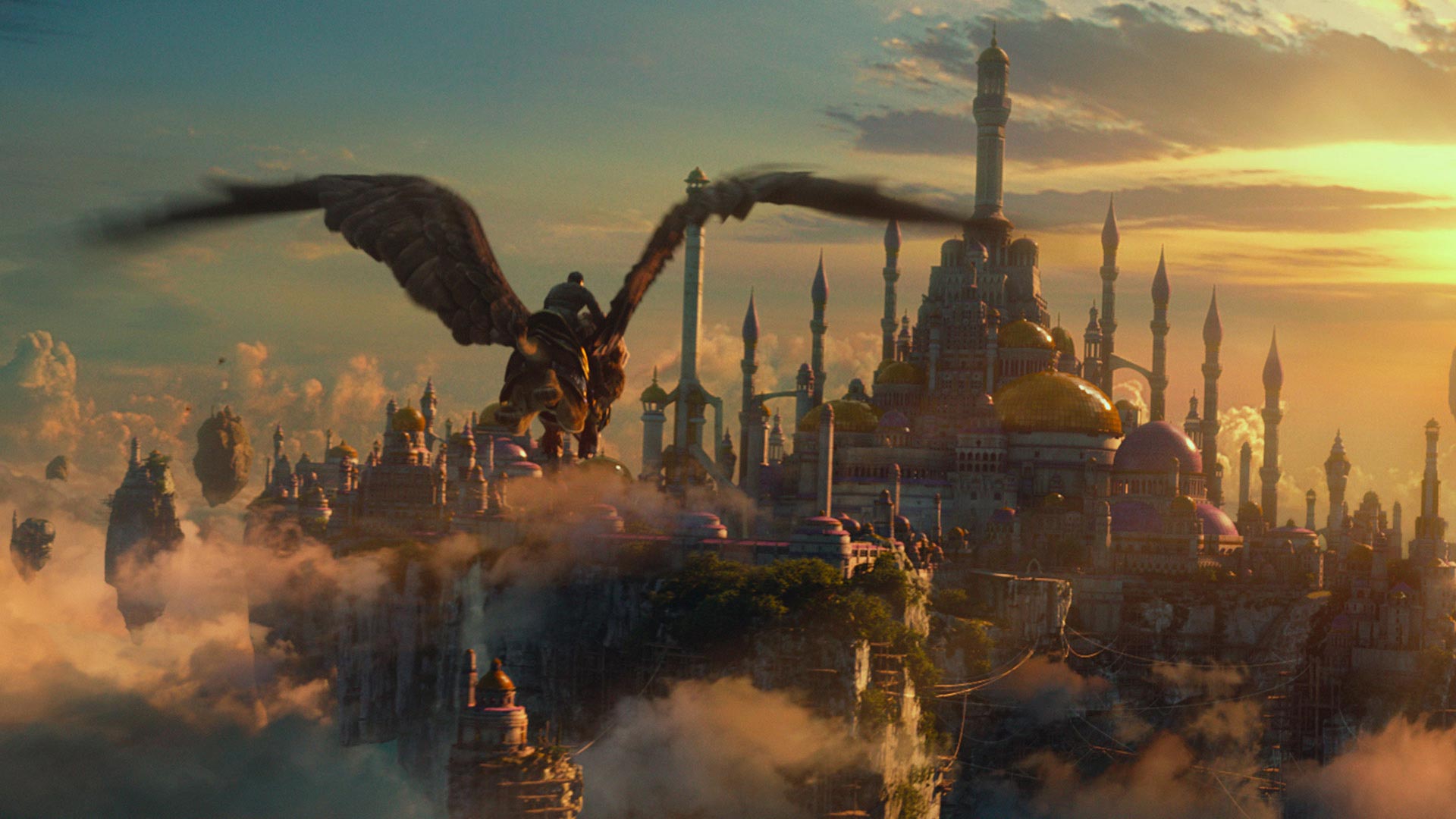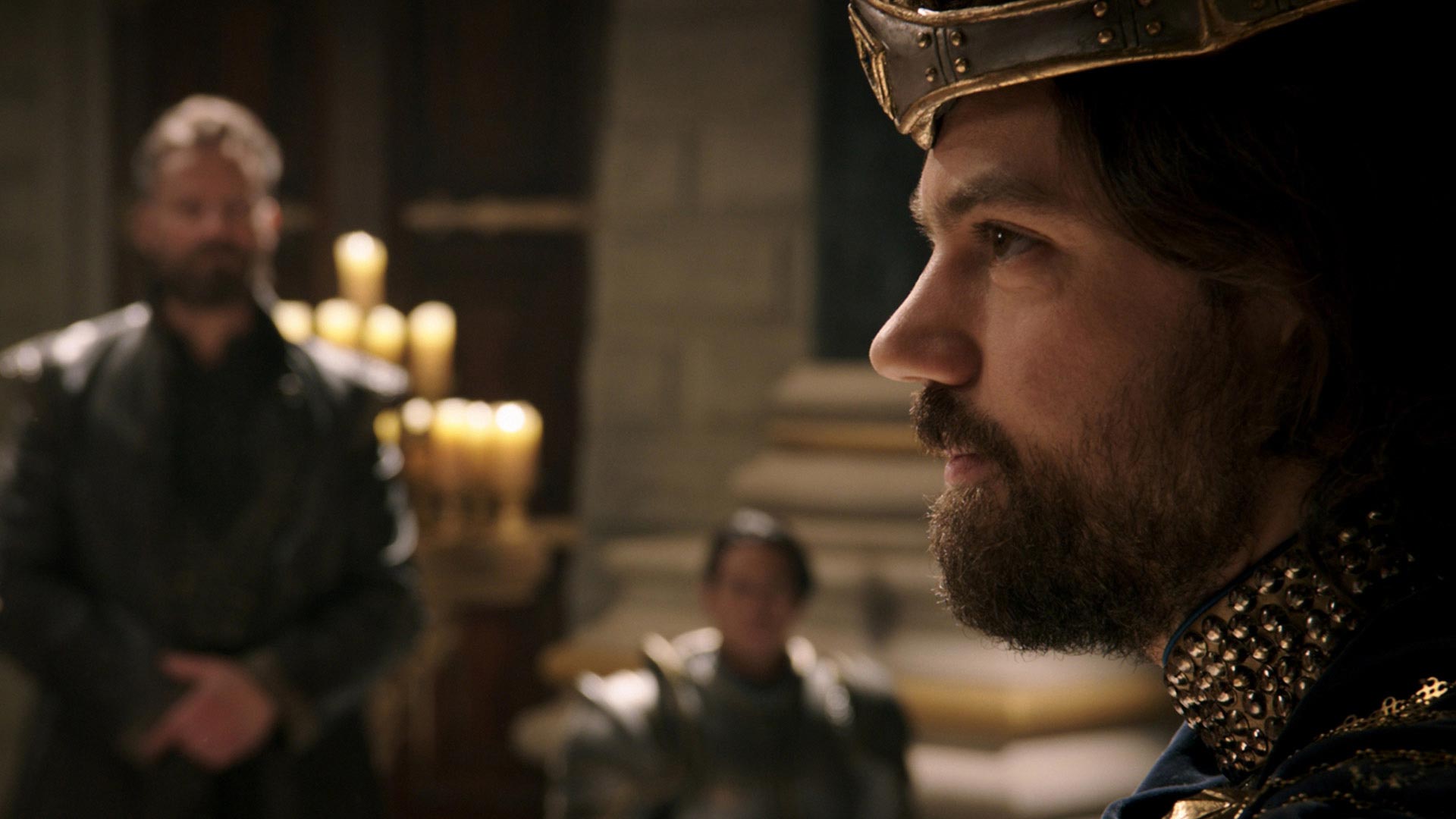The Warcraft movie is a bad start for Blizzard's cinematic ambitions
A weak Alliance lets down Warcraft's big screen debut.

This movie adaptation of the first Warcraft game opens strong: an orc and human facing off across a barren plain, years into the conflict between Horde and Alliance. It’s an echo of Blizzard’s own cinematic introduction to Warcraft III, their best story in this series, and an engaging image in its own right. A successful distillation of what Warcraft is.
Then a cut to something simpler, stranger, even subversive: the orc chieftain Durotan and his pregnant wife Draka discussing baby names on the eve of the opening of the Dark Portal, the magical gateway that will lead his people to the realm of men. Toby Kebbell and Anna Galvin’s performances are able to emerge through heavy CGI, introducing you to characters who are likeable and believable if not human.
They join a horde assembled by the warlock Gul’dan, who prowls cages full of terrified Draenei. His cartoonish malevolence is offset by the straightforward but engaging characterisation of the other orcs: traditional Orgrim, imposing Blackhand. There’s a defiant lack of irony to this opening, encouraging the audience to get to grips with the idea that these are the heroes of the picture as well as its villains, people as well as monsters.

There’s a Dark Crystal-esque cult fantasy movie to be built out of this introduction, perhaps, but that’s not what Warcraft is aiming for—and not where it ends up. An obsessive drive to tell every side of the Warcraft story at once quickly shifts the film’s focus to an extended cast of humans, who look and feel far more out of place in Blizzard’s fantasy world than the orcs do.
Introduced in a hurry, the world of Azeroth comes off as confused and, worse, its most derivative characteristics are starkly exposed. Ironforge, dwarves, humans, Stormwind, gryphons, Goldshire, kings and mages are introduced in a shotgun-blast of generic fantasy. Wan actors in excellent cosplay earnestly intone about Fel and Kirin Tor and Guardians and only briefly does the movie pause to allow any of these characters to display a personality.
This movie packs in its own Easter eggs, teases and hints, but it only has your attention for a couple of hours.
By the time the film cuts back to Durotan it’s a genuine relief. He’s the Ned Stark of orcs, honourable to a fault and trying to chart a course for his people through a deeply compromised situation. There’s heart in these moments, larger-than-life though they might be. But then we’re off with the humans again, watching 22 years of Blizzard’s fiction be forcibly compressed into an overloaded Cinematic Universe Starter Kit. As the movie enters its second act my confidence that Warcraft could make for good cinema fades, replaced by something closer to fascinated embarrassment.
If that sounds harsh, consider how much Blizzard has relied on ‘slow burn’ storytelling in the past: plots that uncurl over the course of years, imagination-provoking hints at the future that reveal themselves through slow exploration of World of Warcraft’s massive landscapes. This movie packs in its own Easter eggs, teases and hints, but it only has your attention for a couple of hours. As a consequence it resorts to telling rather than showing more often than not.
The biggest gaming news, reviews and hardware deals
Keep up to date with the most important stories and the best deals, as picked by the PC Gamer team.

There are moments when the level of environmental detail is genuinely startling. In an early establishing shot of Ironforge’s exterior you can trace the contours of World of Warcraft’s dwarven starting area. Later, as human forces prepare to march from Stormwind, that enormous gateway is present and correct: including the awkward wall in the middle that you have to walk around as you enter the city. In World of Warcraft, that wall serves to break your line of sight to make it easier for the game engine to handle the transition from Elwynn Forest to the city interior. This movie is so faithful to the source material that it incorporates rendering performance tricks from 2004.
Bending Blizzard’s bold, colorful and simple art to fit real human actors was always going to be a challenge, and it proves to be so.
There are a few explicit in-jokes—a murloc here, a polymorph gag there—and a broad commitment to packing in as much of Warcraft’s supporting lore as possible. High elves get approximately three seconds of screentime, but their gaunt faces betray their addiction to magic. An orc that looks remarkably like Grom Hellscream has a non-speaking role. There is a lot here for a fan to notice, a string of setups that go nowhere in this movie but gesture vaguely at the future.
Yet even the staging falters. While the orcs and the backdrops look great, the parts of the film that depend on physical props and sets look tacky and unconvincing. Warcraft is a rare example of a movie where the CGI is more convincing than the practical effects. Bending Blizzard’s bold, colorful and simple art to fit real human actors was always going to be a challenge, and it proves to be so. Stormwind’s interiors look cramped, campy and artificial—a sense compounded by the limited number of physical sets that the filmmakers used, constricting much of the human action to the same few places: the throne room, an armory, a wizard’s sanctum, the Goldshire inn.

These problems might be less pronounced if the writing and characterisation of the humans was stronger. Warcraft establishes a slew of protagonists all at once but never settles on one for long enough for any of them to make an impact. Ben Schnetzer’s runaway mage Khadgar is given the bare bones of a hero’s journey but his performance is too bland to bring it to life. Ben Foster’s Medivh, the wizard pledged to Azeroth’s protection, is tasked with being enigmatic, a font of exposition, and a deus ex machina all at once: a heavy burden that leaves no room for meaningful development.
Of the rest, Travis Fimmel’s Anduin Lothar is treated more generously by the script but can’t settle on an accent. Dominic Cooper’s King Llane looks and sounds bored, well-groomed stuffing for Liberace’s own platemail.
Despite the technically accomplished production, it feels like a fan film. Warcraft’s writers can’t decide if Azeroth’s humans speak in faux-medieval fantasy-British or modern American English. Attempts at deliberate levity fall flat and the contrast between technicolour sets and cloying earnestness is so distracting that it becomes the movie’s key source of humour. Two characters talking late at night in the Goldshire inn flip from melodramatic distress to cringeworthy horniness in a moment, which is either a knowing nod to an average Tuesday night on a roleplay server or another example of the film’s lack of self-awareness.
Warcraft’s success is contingent on audiences accepting Xena-style cheese in the era of Game of Thrones.
The orcs work hard to rescue the movie and they almost succeed. There’s a sense of weight and purpose to these big, brutish simple characters and their big, brutish, simple conflicts that the rest of the film lacks. Warcraft’s best dramatic moments and its most impressive effects are all reserved for Durotan’s Frostwolves and the impossible situation they find themselves in, but they are pushed to one side in the final act in favour of a meandering human-centric conclusion that, once again, simply gestures at a future sequel rather than resolve anything itself.
There’s an old line about Blizzard preferring to tell stories about the Horde and maybe there’s a good reason for that: I’d have happily watched a movie entirely about Durotan and his people trying to make a home for themselves in a world of hammy and unconvincing humans. And if there was only one movie to be made out of Warcraft (and I suspect there might be) then I’d have happily watched Thrall’s rise from gladiator to warchief—the best story in the fiction, and one that this movie is content to tease while making a mess of a simpler plot.
And I say this as someone who likes these stories and knows what to look for. I cannot imagine what a newcomer might make of this new attempt at establishing a cinematic universe. The bar for modern screen fantasy has been set high in every regard, from plotting to action to acting. Warcraft’s success is contingent on audiences accepting Xena-style cheese in the era of Game of Thrones, and that seems like a dim prospect if the bemused silence of the audience I sat in is any indication. The thought process that led to this movie being subtitled ‘The Beginning’ may have also condemned it to being the end.
Joining in 2011, Chris made his start with PC Gamer turning beautiful trees into magazines, first as a writer and later as deputy editor. Once PCG's reluctant MMO champion , his discovery of Dota 2 in 2012 led him to much darker, stranger places. In 2015, Chris became the editor of PC Gamer Pro, overseeing our online coverage of competitive gaming and esports. He left in 2017, and can be now found making games and recording the Crate & Crowbar podcast.


